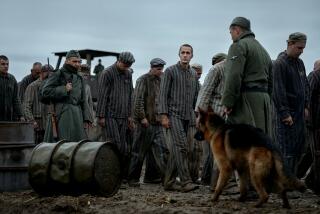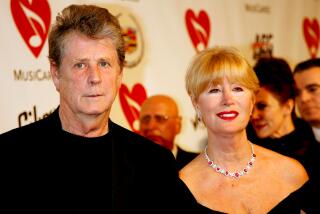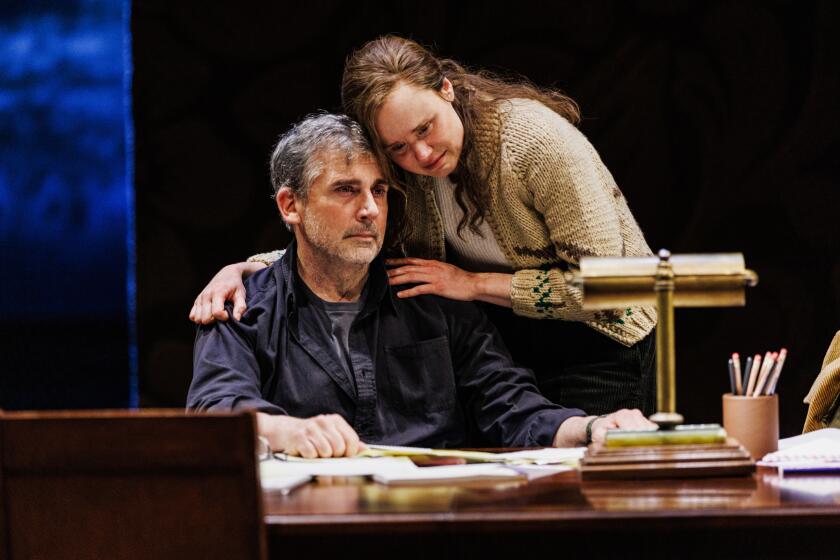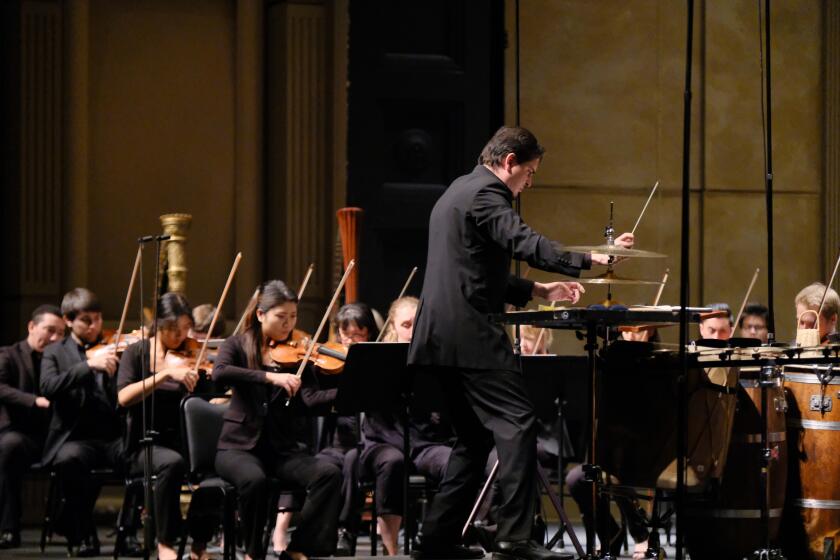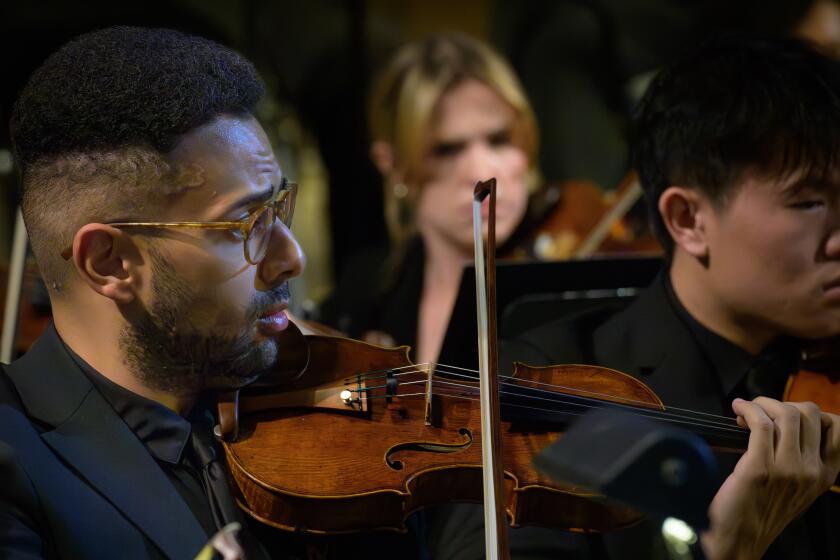U.S. Auditors Query Museum Grant Outlay : Exhibit: Report shows $207,000 for a Science and Industry display disbursed without competitive bids.
Federal auditors have raised questions about more than $207,000 in grant money intended for use in developing a major premier exhibit for the California Museum of Science and Industry--construction of which is now two years behind schedule.
The federal audit, conducted for the National Science Foundation, has concluded that the museum--without prior government approval or competitive bids--subcontracted research and development work for the ambitious new exhibit to a San Francisco Bay Area company owned by one of the scientists charged with developing the show.
But--apparently indicative of confusion that has surrounded development of the new exhibit--the museum released documents late last week that appear to show the National Science Foundation was notified of the questioned subcontract in 1989. The program director of the science foundation division responsible acknowledged in a telephone interview that he knew about the transaction.
Ilan Chabay, the research scientist whose company received the exhibit-design contract, contended that the situation involved “a long history of problems” with the Museum of Science and Industry that he characterized as “fortunately unique in our experience of dealing with other institutions.”
The new findings came after a team of auditors employed by the science foundation examined grant money expenditures at the Museum of Science and Industry in Exposition Park, focusing on an exhibit intended to be the cornerstone of the museum’s basic science program. Technically, the audit was of the California Museum Foundation, the private nonprofit group that supports the state-owned museum.
According to government and museum documents, the project has been so significantly delayed that it roused concern among government grant officers long before the audit was scheduled. In a letter in February of last year, the science foundation formally warned the museum that “the slow progress on this project is still of some concern.”
The exhibit, in which innovative displays will allow museum visitors to conduct their own actual experiments in four areas of basic science, was originally scheduled to open last year. The concept is expected to include such things as a chemistry experiment in which a visitor, using a crank-operated scientific device, separates oxygen and hydrogen in water, then causes the two gases to combine and explode, blowing Ping-Pong balls 30 feet into the air--after which the hydrogen and oxygen recombine and turn back into water.
The museum said late last week that the exhibit is now not expected to be open to public view before February, 1991. It will be housed in a 10,000-square-foot area near the museum’s first floor main entrance and is expected to cost a total of $3.4 million. The museum has been holding space open for the new exhibit for more than a year--a gallery area that has been either empty or used to house traveling exhibitions but is largely unavailable to the museum’s full-time program, the museum said.
Documents bearing on the dispute indicate--and museum spokesmen confirmed--that the National Science Foundation and the museum engaged in a protracted debate with Chabay and his company over whether the scientist would retain proprietary rights to the exhibit designs. Chabay contended that museum officials hired him to develop the exhibit in 1986, only to keep him waiting for three years before allowing him to begin work in earnest.
The audit findings, which were obtained by The Times, represent the second science foundation challenge to the use of grant money at Los Angeles area museums to come to public attention since the beginning of the year.
The government science agency is negotiating with the Los Angeles County Museum of Natural History to resolve a dispute about $258,000 in grant money paid out in 14 different grants. That dispute has resulted in the museum temporarily losing its eligibility to apply for new federal support. The National Science Foundation said it may reach a resolution of the natural history museum dispute this week.
Chabay’s company, the New Curiosity Shop, based in Mountain View, delivered prototypes of 15 displays for the exhibit’s chemistry section last week. However, prototypes for the other three major areas of the exhibit--physics, biology and earth sciences--have not been completed and the museum’s fund-raising program to support the exhibition has lagged badly, the museum said. Chabay’s firm is involved only in the chemistry displays.
“We were very careful all along the way to make clear (Chabay’s) role,” said Evan Nossoff, a museum spokesman. “It’s not the type of contract you can bid out like you would for highway construction or the purchase of basic supplies. It would be a little bit like asking (the late physicist Albert) Einstein for a request-for proposal.”
The financial review findings--in which science agency auditors questioned the expenditure of nearly all of the research and development budget for the chemistry portion of the new exhibit--include charges that the museum improperly issued the subcontract to Chabay after submitting a budget proposal to the federal agency that showed the work would be done entirely by museum employees.
The audit is currently under review by top National Science Foundation grant officers. The government agency has made no decision on whether to demand return of any of the money involved or to impose other sanctions against the museum.
The situation began to take shape in 1986, when Chabay was asked to develop new concepts for so-called interactive science displays in which museum visitors could actually participate in scientific activities as viewing to watching static displays or watching museum workers demonstrate scientific techniques. The exhibit concept, which will be unique in North American or European museums, Chabay said, represents the cutting edge of new museum technology.
Fund-raising and other problems delayed the start of development work in earnest until last year. The delay was parently caused by protracted negotiations between the museum and Chabay to arrive at the contract under which the displays would be developed. To satisfy concerns by Chabay that his own intellectual property rights would be preserved despite the funding of the program by the federal government, the museum and Chabay eventually settled on an agreement in which Chabay makes an annual $2,000 contribution to the museum in lieu of royalty payments for profits he may receive by reselling the government-financed concepts.
Government auditors concluded that the transactions between the museum and Chabay raised significant questions. They concluded that $200,446 had been turned over to Chabay in the subcontract without government authorization, of which $151,000 was also deposited improperly in a bank account in which it was mixed with other funds. “The grantee,” the official audit report concluded, “did not administer its National Science Foundation grant in accordance with applicable federal regulations.”
The auditors also questioned more than $7,000 in other costs, including salaries paid to a temporary employee who was supposed to receive only 50% of her wages from the grant, but got all of them, instead. The museum agreed to return the money and to turn over to the government $4,594 in interest that the grant funds drew while they were improperly deposited.
Nossoff noted that the grant in question was the first science foundation award the museum has ever received. “We’re not used to working with federal standards,” Nossoff said. He contended that the museum had notified science foundation grant officers of the decision to subcontract with Chabay--an assertion confirmed by correspondence with the science foundation provided to The Times by the museum.
Michael Templeton, the science foundation’s program director for science education, confirmed that he had been made aware of the subcontract. He characterized the auditors’ findings as “preliminary” and said additional negotiations will be held with the museum in an attempt to resolve the dispute.
More to Read
The biggest entertainment stories
Get our big stories about Hollywood, film, television, music, arts, culture and more right in your inbox as soon as they publish.
You may occasionally receive promotional content from the Los Angeles Times.

